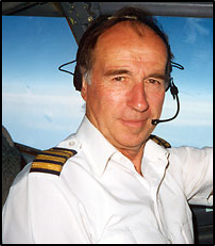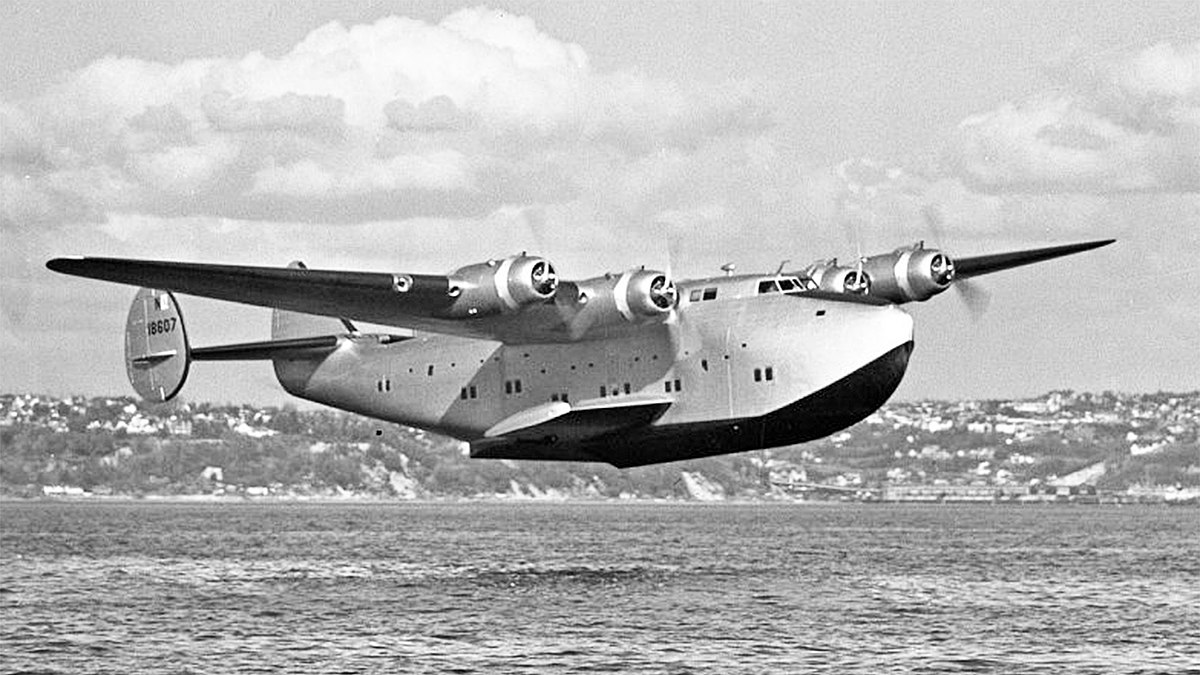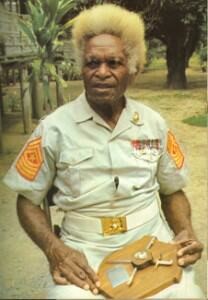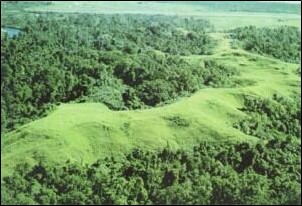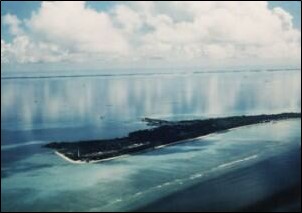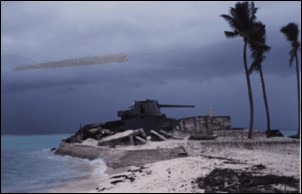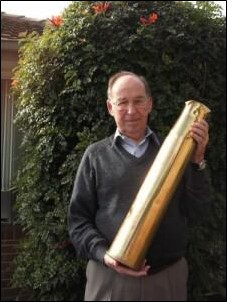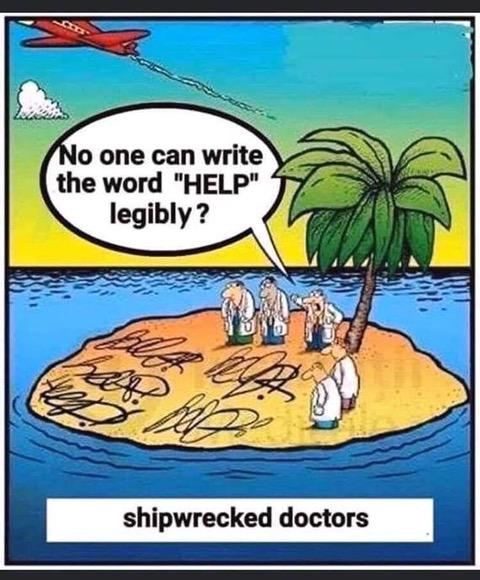|
|
||
|
||
|
Privacy Policy | Editorial Policy | Profit Policy | Join the Association | List of Members | Contact us | Index | Links |
||
|
Back Go to page: 1 2 3 4 5 6 7 8 9 10 11 12 13 14 15 16 17 18 19 20 Forward |
||
|
John Laming
Aeroplanes and other stuff. |
||
|
The folks down the back.
Years ago when Boeing, Lockheed and Douglas long-range propeller-driven airliners crossed the world’s oceans, only the wealthy or businessmen could afford to fly. The early Boeing Clipper flying boats operated by Pan American World Airways carried 74 passengers while the Boeing Model 377 Stratocruiser took 112. Douglas produced the DC-7C known as the “Seven Seas” with room for 105 passengers plus crew.
|
||
|
|
||
|
In those days it was customary for the captain to visit the cabin and greet important passengers while the first officer, navigator and radio officer took care of things at the sharp end. After all, there was plenty of time between landings and it was considered quite a social occasion for passengers to be seen chatting to the captain. It happened in ocean-going liners as well where a seat at the captain’s table was considered a privilege.
The arrival of the jumbo jet changed all that social stuff. Not only was it well nigh impossible for the captain to squeeze past the drinks trolley but the sight of 300 or more passengers gawking at his regal presence was enough to scare away the most ego-driven four-bar aircraft commander. The front toilet was even a hazard if he needed to drop his uniform daks [Daks is a British uniform designer] on the wet sticky floor. And, of course, the final barrier to the captain’s visit to survey the masses down the back was the threat of a terrorist lurking at seat 55B. And today, a complicated code is inserted into the armoured flight deck door and buttons pressed by a flight attendant serving coffee to the crew.
Back in 1976 when I joined my first airline it was still customary for the captain to talk to the SLC (Self Loading Cargo – a somewhat snide description observed on pilot internet websites to denote passengers). In fact, it was a pleasure for some captains to be able to stretch their legs and have a break from a talkative first officer or heavy smoking flight engineer.
That airline was owned by the Republic of Nauru and was called Air Nauru. Since its inception in the early 70s, the airline operated at various times a single Mystere 20, two F28 Fokker Fellowships, and several Boeing 727 and 737s. Nauru then was a phosphate-rich island of some 7,000 inhabitants with gross national earnings of around $100 million a year. Despite being heavily subsidized by the government, the airline lost money to the tune of $40 million a year. But in general, the population lived well compared to other tiny Pacific republics, until in the mid-90s government mismanagement led to the inevitable collapse of the economy. Now the government owns just one old Boeing 737 that trudges weekly from Brisbane to Nauru via refuelling stops at Honiara in the Solomons and Tarawa in Kiribati. The name of the airline is now called “Our Airline.”
This story, however, covers the old days of Air Nauru and the folks down the back.
Sergeant Major Jacob Vouza, a hero of the Battle for Guadalcanal.
The year was 1983 and his name was Tom Cleary and I noticed him gazing through his window at the Pacific Ocean far below. He had boarded the 737 at Guam and was on his way to Guadalcanal in the Solomon Islands. We talked a while and he told me he was a former US Marine officer who had fought the Japanese in the Battle for Guadalcanal in 1942. This savage six-month campaign cost the lives of over 1,600 Americans and 14,800 Japanese. Among the heroes of that campaign was a Solomon Islander native policeman – Sergeant Major Jacob Vouza who had come out of retirement to help the American forces.
Vouza was slipping through Japanese lines near Henderson Field when he was caught by an enemy patrol. He had seen a large number of Japanese moving towards the perimeter of the US-held airstrip and knew it was vital for him to try to warn US Marines of an impending attack. The Japanese discovered a miniature American flag in his pocket and tying Vouza to a tree, tortured him to gain information. He refused to give in so the Japanese bayoneted him and left him for dead. Bleeding heavily from his wounds, he was able to bite through his ties and crawled to an outpost in the lines of US Marines defending the vital airstrip and warned them of an impending large-scale attack on the airstrip. His actions saved hundreds of lives and the Japanese attacking force was destroyed. He was decorated for his bravery by both the British and Americans and in 1979 was knighted by Queen Elizabeth of England. He died in 1984.
Tom Cleary had fought the Japanese with Jacob Vouza and told me that on hearing of Vouza’s ill-health in 1983, the President of the United States, Ronald Reagan, had asked that a representative of the US Marines Raider Battalion go back to Guadalcanal to pay farewell to Sir Jacob Vouza from the American people. Colonel Tom Cleary, USMC was that representative.
I invited Tom Cleary to the cockpit deck for our landing into Nauru where another crew was waiting to continue the flight to Honiara, the capital of Guadalcanal. I lent him my camera after he mentioned his wife had forgotten to pack one in his suitcase. One week later, after his visit to farewell Jacob Vouza, Tom Cleary returned to the US via Nauru and Guam, leaving the camera and a letter for me with our agent on Nauru. In his letter, he wrote of his sad farewell to Jacob Vouza in his village and then had spent a day exploring the battleground around Henderson Field – named in honour of Lieutenant Loftus Henderson, a US Marine pilot who died in the Battle of Midway.
In his letter, Tom Cleary told me that he swam across a stream called the Lunga River situated near the perimeter of the airfield, to visit a spot where his patrol had ambushed a small Japanese force of soldiers in 1942. Climbing through some reeds on the banks of the stream he was shocked to hear Japanese voices nearby. Crawling closer, he saw a small group of old men praying in front of what appeared to be a Japanese-built Shinto shrine. They were former Japanese soldiers on tour of the battle area. He was certain they were the survivors of the ambush as the time was close to the anniversary of that particular battle. In his letter he said he still hated the Japanese from the atrocities he had witnessed during his time on Guadalcanal and wanted nothing to do with them. He returned over the Lunga without the Japanese veterans ever knowing he had observed them.
On another occasion I was flying the Nauru-Honiara scheduled service in a Boeing 737. The air hostess brought some coffee to the flight deck and mentioned two American passengers were down the back and that they were on their first visit to Guadalcanal since the war. I quickly invited them upfront for the landing. Guadalcanal was 20 miles in front of us as the 737 descended through 8,000 feet over the mountains of Malaita Island. The view was superb. Through fair weather cumulus clouds, we could see the rusted remains of a Japanese destroyer resting in an inlet of the Florida Group of islands. This warship had been bombed by USAF B-17 Flying Fortresses in 1942 and beached.
Bloody Ridge, with Henderson Field in the background.
Our American passengers were former US Marine pilots. Both were silent as we passed over Iron Bottom Sound, the graveyard of so many ships bth Japanese and American. One pilot had tears in his eyes and I didn’t know what to say. He sensed our embarrassment and explained the last time he was here the skies were full of anti-aircraft fire and aircraft going down in flames. The sheer beauty of the view of the islands was in stark contrast to 40 years ago when he was a young fighter pilot. We circled for landing at Henderson Field from whence he had fought the Japanese for control of the airfield and he recognized the outline of several other wartime airstrips. We could see Edson’s Ridge, also known as Bloody Ridge where in September 1942, a few hundred US marines held off repeated night attacks by vastly superior numbers of Japanese soldiers intent on taking this vital feature so close to the airstrip.
Taxiing to the tiny airport terminal, we saw a group of elderly Japanese men conducting a flag raising ceremony on the tarmac. It turned out they were surviving members of a Japanese floatplane unit who had returned 40 years later to see Guadalcanal. Our two American pilots walked past them without turning their heads. By coincidence, the Japanese pilots then boarded our 737 for their eventual flight home to Japan. One who spoke good English asked if his comrades could visit the flight deck. We accorded them the same courtesy as the Americans.
Betio Atoll, a tiny island, but site of a brutal battle during World War II.
Tarawa Lagoon is bordered by a series of coral islands surrounding a beautiful blue lagoon. In 1943 the area was known as the British Gilbert Islands and is now known as the Republic of Kiribati. Japanese forces invaded Tarawa in September 1942 and built an airstrip on the main island of Betio. It was defended by 4,000 Japanese marines. The Americans were concerned that bombers operating from Betio could cut supply lines from USA to Fiji and Samoa where US forces were building up for the push towards Japan. In November 1943, US Marines landed on the beaches of Betio. After three days of heavy fighting resulting in the loss of 1,200 American and 4,000 Japanese lives, US Marines managed to regain control of the airstrip. Betio atoll was less than one mile long and half a mile wide but was riddled with concrete underground bunkers. In 2014 many of these bunkers were still there. There are several large gun emplacements on the atoll sands.
By 1983, not many US veterans of the battle have survived. Occasionally one or two would visit Tarawa but their numbers dwindled each year. After all, Tarawa was not an easy place to get to from the US. Air Nauru flew to Tarawa from Majuro in the Marshall Islands and from Nauru, too. On this occasion I was flying the Nauru to Tarawa flight, when the senior air hostess said a baseball-capped elderly American gentleman was sitting down the back. There were many occasions when we carried less than 20 passengers and she had sat next to this little old man to keep him company as he seemed so quiet and lonely. He told her he was making his first trip back to Tarawa since he fought there in 1943. Leaving the first officer Barry Tate in charge of the controls, I went down the back to talk to him. I knew much about the Tarawa campaign having read history books and had visited the battlefield during our stop-overs. Would he like to visit the flight deck and see Betio atoll from the air, I asked him. He was delighted to do so.
The main airport of Tarawa now is situated on Bonriki atoll some 10 miles from Betio atoll, where the outline of the old wartime Japanese airstrip can still be seen. A causeway now connects Betio atoll to adjoining islands. I planned to descend early so as to fly low past the landing beaches of Betio at 500 feet. We had the old US Marine standing behind us to get a better view and as Betio came into sight he talked excitedly of the terrible scenes of battle on Red Beach One and Two. These names are still current to this day. As we slowed in preparation for the approach, he pointed out the spot where he had waded through shallow water to the beach and been fired upon by dozens of Japanese guns. Having personally walked these beaches at low tide, I could only guess what terrible scenes he had witnessed. He said the Japanese defenders often hid inside buried 44-gallon drums then sniped at US Marines before ducking under cover. The only way to flush them out was to creep up close to the 44-gallon drum and toss a hand grenade inside. One can only imagine the result to the unfortunate Japanese soldier inside his 44-gallon drum.
Japanese coastal defence guns still littered Betio Atoll in 2014.
Barry Tate, our first officer, was a man with a wonderful dry sense of humour. When the old Marine told us of the hand grenades episode, Barry said “Jesus! I bet that made their ears ring…” His reply went right over the old boy’s head but I was still laughing when I did one of the worst landings of my career a few minutes later.
I struck a serious problem while boarding passengers at Saipan, 80 miles north of Guam in Micronesia. The island was the scene of a fierce battle between US and Japanese forces in the closing months of the Pacific war. Our Air Nauru flight was scheduled to fly from Saipan to Manila – a flight time of three hours. The first three rows of seats were set up in business class configuration with a curtain separating business class from tourist class. Passengers had boarded and we were set to start engines when the senior air hostess entered the cockpit with a worried look on her face.
She was concerned about a young woman who looked very ill and for the time being had propped her up in a business class seat until I could have a talk to her. We stopped the before-start checklist until I could decide whether or not to off-load the sick woman. Entering the cabin I was shocked to see a young Filipina woman ashen-faced in pain and blood seeping from a bandage under her blouse. Her first name was Ninfa. It was obvious she needed urgent hospital treatment but she begged not to be off-loaded. I asked her the nature of her injuries. She said she was a singer at a Saipan night club and while being driven home after work the car she was in was involved in a collision and she had received a severe injury to her chest. She was taken to hospital where she was bandaged up and left alone. She knew that as a Filipina contract worker she had no rights whatsoever and certainly had no money for medical and hospital expenses and would lose her job because she could not entertain. She pleaded with me to take her home to Manila where her family could take care of her. She felt she was going to die and wanted to have her family around her if that happened.
I made the decision to take her to Manila and allotted a flight attendant to stay with her during the flight – meanwhile making her as comfortable as possible. Halfway between Saipan and Manila, she looked terrible, gasping with pain and clutching her chest. Within VHF contact of Manila we arranged for an ambulance to meet the aircraft and for her relatives in Manila to be advised. She gave me their address and our agent at the airport found her bag in the cargo hold and placed it with her in the ambulance.
|
||
|
My neighbour just yelled at her kids so loud that even I brushed my teeth and went to bed. |
||
|
|
||
|
A few weeks later I landed at Manila again, staying overnight before returning the following day to Saipan, Guam and Nauru. With a few hours to spare at Manila, I caught a taxi to the address Ninfa had given me. She had patched up well in those weeks and I was given a warm welcome by her family including her young children. For months after, when in Manila I called in to see them all until Air Nauru cut out the Manila trips. By then, Ninfa had regained her beautiful singing voice but it had been a close call.
Shortly after joining Air Nauru in 1976 I flew to Honiara on the island of Guadalcanal. We stayed overnight at the Mendana Hotel on the waterfront. A pilot friend of mine who flew BN2 Islanders for Solair, the local operator, took me around the battlefield area surrounding Henderson airport. In 1976, fox holes and strands of rusted barbed-wire could still be seen in the kunai grass surrounding the airport, and children would bring long corroded Japanese and American bullets and cartridges to sell to the occasional tourist. I took some of this ammunition back to Nauru and showed it around.
An Australian engineer living on Nauru warned me that although the American 1942 vintage ammunition was relatively safe to handle, the Japanese ammo was unstable and could go off if mishandled. Having decided it would be foolish to cart this stuff back to Australia in my navigation bag, I decided to dump the lot over the reef that surrounded Nauru island. Waiting until low tide I walked the one hundred yards from the Menen Hotel to the ocean reef and with some regret consigned the 20-odd lethal rounds of Guadalcanal war history to the deep. It was fortunate that I did, because a few days later I was paraded in front of the Nauruan Director of Civil Aviation – one Felix Kun – and told I was in serious trouble for bring prohibited arms to the peaceful island of Nauru.
Peaceful? That was a laugh. On Nauru there were drunken brawls among the locals every night and people jumping for cover as large obese young men scorched around the island road on huge 1,500 cc Honda Goldwing motorbikes with a couple getting killed every week. Nevertheless, I apologized to the DCA saying I had no idea there was a prohibition on bringing in war souvenirs, particularly as Nauru itself was a former Japanese base and unexploded bombs could still turn up buried deep in the area where phosphate mining was taking place.
After I had promised Scout’s Honour that I had already seen the folly of my ways and dumped the offending ammunition into the sea, the DCA let me go. For months afterwards and despite that promise, the local Customs and Police seemed to go through my luggage and navigation bag more thoroughly than necessary. Eventually all was forgiven and I flew without further harassment.
Then one day I landed the F28 at Tarawa on a scheduled flight Nauru – Tarawa – Nauru. A previous cancelled flight meant there were more passengers waiting to board than we could fit in. Among those waiting to get a seat was a New Zealand pilot and his wife and child. His name was John Walton and if I recall correctly he was heading to Hong Kong on a connecting Air Nauru Boeing 727 flight from Nauru. John was a seaplane pilot for the Kiribati Fisheries department and he was going away on a well-earned holiday. Now I forget the details but I managed to sneak John into the cockpit with his wife and child sharing two jump seats for which he was eternally grateful.
We talked on the way to Nauru and he told me about his scuba diving adventures exploring the shallow waters of Tarawa lagoon off the invasion beaches of Betio. He had seen a veritable armada of sunken aircraft, landing craft and tanks, rifles, machine guns and stacks of shell ammunition all from the US Marine assault on the Japanese defences on Betio atoll.
Not your average checked bag…
On our arrival at Nauru he asked how he could return the favour of the free trip to Nauru. I told him not to worry about it, although perhaps – just perhaps, he could arrange to send me an empty souvenir shell casing as a door stop. I stressed the importance of not sending me a live shell as the Nauruan customs people would slaughter me.
I had forgotten all about this episode until over six months later the twice-weekly 737 landed from Tarawa and I was waiting to take it over. Baggage was unloaded and then one of the Nauruan loaders handed me a rather heavy and long cylindrical object carefully wrapped in brown paper and addressed in large letters to Captain John Laming of Air Nauru. Hidden from the view of any prowling police or customs officers, I carefully lifted a piece of the brown paper covering and was startled to find underneath it was an American brass 90 millimeter artillery shell casing – minus the shell, thank goodness. This object was over two feet long. An attached note said thanks from John Walton and that he had located the casing while diving in Tarawa lagoon and was part of a clip of five that he had hauled to the surface. He had cleaned and polished the brass casing and asked the crew of the 737 to make sure I received it personally.
Well, it just had to happen and within minutes one of the incoming air hostesses had blabbed to her uncle (a police officer) that I had this long suspicious object in my possession. Fortunately he was new to the game and unaware of my previous brush with the law. He examined the thing wrapped in brown paper and with raised eyebrow asked the obvious question – like what have you got there, captain?
I took him aside and asked him to keep this confidential saying the object was actually a present for my wife and that, in fact, it was an “adult toy.” He looked at the parcel closely – felt the smooth circular surface, then laughed uproariously. I was off the hook. |
||
|
|
||
|
|
||
|
|
||
|
|
||
|
|
||
|
Back Go to page: 1 2 3 4 5 6 7 8 9 10 11 12 13 14 15 16 17 18 19 20 Forward |
||

